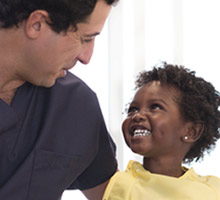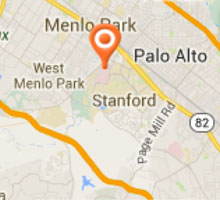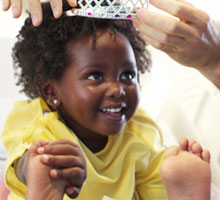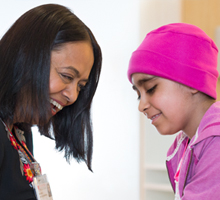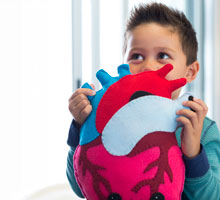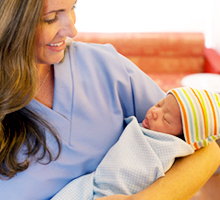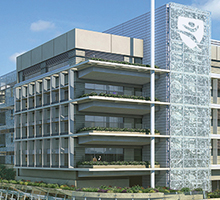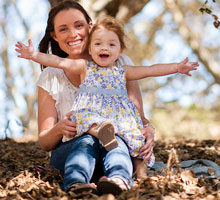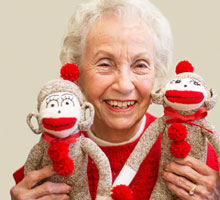For Release: March 19, 2015
STANFORD. Calif – Last spring, a few months before his 2014 high school graduation, Ray Santa Cruz suddenly noticed a strange feeling in his chest.
When he ran, he felt pain in his chest and noticed his breathing changed. Sometimes, if he stood up quickly, he felt faint and his legs weakened under him. Soon, the symptoms started interrupting his sleep. “I couldn’t breathe,” he said. “Whenever I would sleep, I would wake up to chest pain and my heart beating fast.”
One night in early summer, his parents—who initially thought Ray was having anxiety attacks—took him to a local emergency room because his symptoms became too troubling to ignore. His doctor told him he needed to be seen by a cardiologist.
After a battery of tests, the root of his problems was found: Ray had lived his whole life with a rare, congenital heart defect that affected his coronary arteries, the vessels that feed blood to the heart. By fall, his care had been transferred from Salinas, California, where he lives with his family, to a team led by Frank Hanley, MD, cardiothoracic surgeon at Lucile Packard Children’s Hospital Stanford and Stanford Children’s Health.
The name of Ray’s scary problem? Anomalous aortic origin of a coronary artery, a condition associated with a high incidence of sudden death. In early December, he underwent a complex surgery to correct the problem.
Thirty years ago, most patients with congenital abnormalities of the coronary arteries were only diagnosed after collapsing from a heart attack in their teens or 20s. But in the past dozen years, advances in imaging technologies have made it easier to see minute details of the coronary arteries, and more cases are being identified before these young patients suffer severe consequences.
While cardiologists are aware of acquired coronary artery problems in the elderly, many don’t know that the condition can also affect younger patients, often causing them to be misdiagnosed.
Cardiologists treating younger patients will often prescribe a standard bypass operation, the type designed for older patients with the more typical, acquired blockages in the coronary arteries. “That’s absolutely the wrong thing to do,” said Hanley, the Lawrence Crowley, MD, Professor in Child Health and a professor of cardiothoracic surgery at Stanford University School of Medicine. “That’s what you do for Grandpa.”
In a coronary bypass procedure,a surgeon harvests blood vessels from a different part of the body, often the leg,and uses them to fashion a detour around a blocked artery. But for patients like Ray, that approach can backfire and the graft can stop functioning.
In Ray’s heart, his left coronary artery didn’t branch off from the aorta in the correct area. Instead, it grew from the aorta on the opposite side, which meant it had to travel several extra inches through the wall of his heart. Every time his heart pumped, it squeezed the artery “like it was in a vise,” said Hanley. This decreased the blood flow to Ray’sheart and cut it off entirely for short periods when he exerted himself.
Defect more common than originally thought
In the 1980s, physicians only knew of about a dozen cases per year of AAOCA, usually found during autopsies. Doctors now know this defect is more common, but the exact number is hard to pin down since many cases are undiagnosed. In the 15 years since Stanford physicians developed surgical techniques to fix the defect, about 90 patients have been treated by the cardiothoracic surgery team at Lucile Packard Children’s Hospital. No other institution has treated as many cases in young people.
The fix
Hanley and his team have developed a series of delicate operations that directly address the abnormal arteries.That’s because AAOCA comes in several variations, and each requires a different surgical procedure for correction.
Most commonly, the procedure will involve “unroofing” a segment of the abnormal artery, or “translocating,” which re-routes the abnormal coronary artery if it is trapped between the aorta and pulmonary artery. Ray, unfortunately, had the rarest and most complex variation of AAOCA, and neither of these surgical approaches could be used. Ray’s coronary artery not only arose abnormally from the aorta, but it was also embedded in the muscle of the wall of his heart for several inches and travelled behind the pulmonary valve. Until recently, no effective surgical procedure had been developed to treat this form of the condition.
Over the last decade, the Heart Center team designed a novel procedure for Ray’s form of AAOCA. It involves removing the heart muscle overlying the portion of coronary artery buried in the muscle of the heart wall, and also moving the pulmonary artery trunk and valve forward on the heart to relieve compression of the underlying abnormal coronary artery.
It worked, and Ray’s repair was completed before his heart muscle incurred any lasting damage. But some cases are not diagnosed early enough to avoid permanent damage or sudden death. In rare cases, the damage has been bad enough that otherwise young, healthy patients have required heart transplants.
“No one thinks young athletes will have heart problems like this,” said Richard Mainwaring, MD, a cardiothoracic surgeon on Hanley’s team and clinical professor of cardiothoracic surgery at the School of Medicine. “The chest pains are mini-episodes of heart attacks. But coaches don’t think you’re having a heart attack, they think, ‘you need to toughen up.’ But if you are 70, you would be rushed to hospital. Invariably, there is a delay in diagnosis.”
The initial diagnosis was frightening and demoralizing for Ray and his family. “Even just to hear the diagnosis, I was scared,” he said.
Ray’s parents, Joanna Santa Cruz and Ray Olivares, credit the expertise and advanced techniques of the Stanford team for their son’s health. “He was up and walking quickly right after leaving the hospital,” Joanna said.
Hanley and Mainwaring are confident Ray will make a full recovery. He’s still shaken by the long months he lived with his mysterious chest pains, but within weeks of his surgery in December, he said he already felt stronger.
This spring, he’s leaving for Sacramento to start automotive school, and he’s looking forward to basking in his love of all things car-related.
“I’m happy it’s done and over with,” said the affable Ray, no longer worried about those chest pains. “It was a success, and now I’m just taking things day by day.”
About Stanford Children’s Health and Lucile Packard Children’s Hospital Stanford
Stanford Children’s Health, with Lucile Packard Children’s Hospital Stanford at its core, is the largest Bay Area health care enterprise exclusively dedicated to children and expectant mothers. Long recognized by U.S. News & World Report as one of America’s best, we are a leader in world-class, nurturing care and extraordinary outcomes in every pediatric and obstetric specialty, with care ranging from the routine to rare, regardless of a family’s ability to pay. Together with our Stanford Medicine physicians, nurses, and staff, we can be accessed through partnerships, collaborations, outreach, specialty clinics and primary care practices at more than 60 locations in Northern California and 100 locations in the U.S. western region. As a non-profit, we are committed to supporting our community – from caring for uninsured or underinsured kids, homeless teens and pregnant moms, to helping re-establish school nurse positions in local schools. Learn more at stanfordchildrens.org and on our Healthier, Happy Lives blog. You can also discover how we are Building the Hospital of the Future. Join us on Facebook, Twitter, LinkedIn and YouTube.




